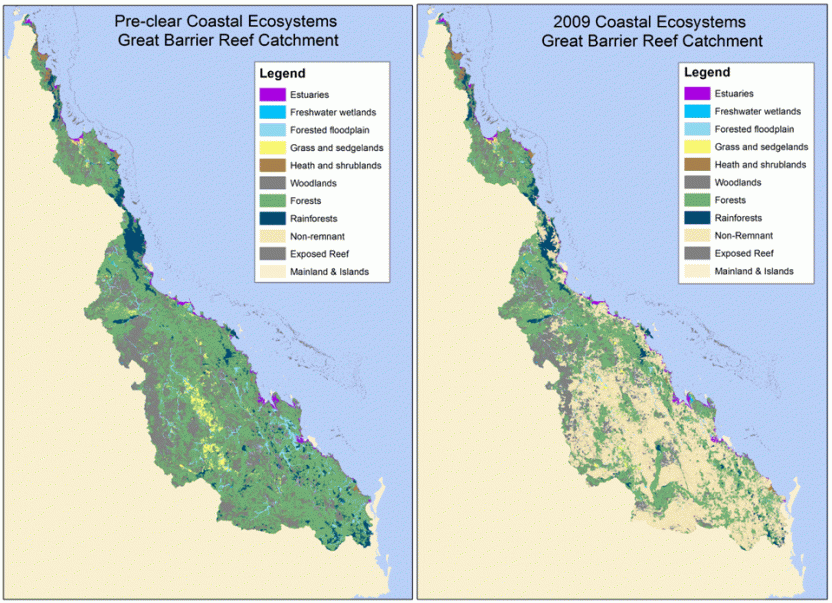The Fitzroy Natural Resource Management (NRM) region is the largest NRM region by area in the Great Barrier Reef (GBR) Region. Fitzroy covers most of what is often known as Central Queensland. The principal city is Rockhampton, with Gladstone and Emerald as other major cities. It covers approximately 15.8 million hectares, and had a population of 227,800 people in 2016. Fitzroy is the largest river catchment within the GBR Region - all water run-off flows into the Fitzroy River and eventually into the GBR lagoon. A marine extension of the Fitzroy NRM region is also defined by the Great Barrier Reef Marine Park Authority, marking the marine area of the Great Barrier Reef most closely associated with the Fitzroy NRM region.
Agriculture and Mining are key industries in the Fitzroy NRM region. Agriculture derives benefits from ecosystem services. Ecosystem accounting provides a framework to measure changes in ecosystem condition, ecosystem services and ecosystem assets in both physical and monetary terms. This feature article presents a summary set of ecosystem accounts for the Fitzroy NRM region, including; a land cover account; a marine condition summary; and provisioning services for the agriculture, fishing and aquaculture industries. It demonstrates some of the ways in which more detailed integrated information can be utilised from these GBR accounts.
